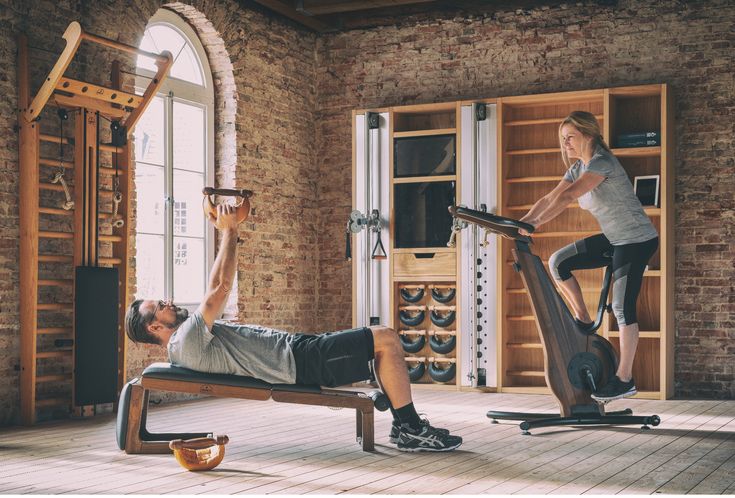In the hustle of daily American life, going to a gym can feel like another chore. Whether it’s the traffic, monthly fees, or time crunch, a public gym isn’t always realistic. That’s why more and more people are turning to a personalized home gym setup that fits their lifestyle and space.
This beginner-friendly guide is designed to help U.S. residents build a simple, affordable, and efficient home gym setup—even in small spaces.
Why a Home Gym Setup Is a Great Idea in the U.S.
Home workouts offer flexibility, privacy, and long-term savings. From busy parents to remote workers, a home gym gives you the power to stay active without ever leaving the house.
Benefits of a home gym setup:
-
Workout anytime, no schedule restrictions
-
No lines, no distractions
-
Save on long-term gym fees
-
Create a comfortable and motivating space
-
Family-friendly for all fitness levels
Assess Your Space Before You Start
Every home gym begins with space planning. Whether you live in a small apartment or a large house, you can set up a functional gym with the right layout.
Popular home gym spaces in U.S. homes:
-
Garage
-
Spare bedroom
-
Basement
-
Living room corner
-
Backyard (for outdoor training)
Use a measuring tape and sketch your space to plan where your equipment will go. Even 6×6 feet can be enough to start.
Define Your Fitness Goals First
Your fitness goals will shape your equipment and space needs. Are you training for strength, weight loss, endurance, or flexibility?
Goal-based home gym setup:
-
Cardio focus: Treadmill, jump rope, bike
-
Strength training: Dumbbells, bench, resistance bands
-
Flexibility: Yoga mat, foam roller, balance ball
-
Functional training: Kettlebells, pull-up bar, plyo box
Being goal-specific helps avoid buying unnecessary gear.
Must-Have Equipment for Beginners
You don’t need to buy everything at once. Start small with the basics and upgrade over time.
Essential home gym items:
-
Yoga mat
-
Resistance bands
-
Adjustable dumbbells
-
Jump rope
-
Foam roller
-
Stability ball
-
Foldable bench
Optional upgrades (as you grow):
-
Treadmill or rowing machine
-
Kettlebells
-
Barbell set
-
Wall mirror for form-checking
Choose equipment that suits your goals and your space. Quality matters more than quantity.
Smart Layout and Organization Tips
A clean, clutter-free space makes workouts easier and more enjoyable. Organizing your home gym setup well saves time and reduces frustration.
Layout ideas:
-
Use foam floor tiles for comfort and protection
-
Mount shelves or hooks for gear storage
-
Keep a workout calendar or whiteboard
-
Place cardio machines near windows for fresh air
Keep your gym space open and breathable to stay motivated.
Create a Motivating Environment
Your home gym should energize you. The right atmosphere makes a big difference in consistency.
Ways to boost your gym environment:
-
Add a Bluetooth speaker for music
-
Use bright lighting or smart bulbs
-
Hang motivational quotes or posters
-
Keep a water bottle and towel handy
-
Consider a fan or air purifier for comfort
Make your space one you actually want to spend time in.
Build a Routine That Works
Setting up a gym is just the start. Creating a consistent workout habit is where real results come in.
Tips to stay consistent:
-
Schedule workouts like appointments
-
Start with short sessions (20–30 minutes)
-
Track your progress using fitness apps
-
Mix cardio, strength, and flexibility
-
Involve family or a friend for accountability
Even small daily efforts add up when done consistently.
Budgeting Your Home Gym Setup
Building a home gym setup doesn’t have to be expensive. Start with basics and invest slowly as you grow.
Budget breakdown:
-
Starter setup ($150–$300): Mat, bands, dumbbells, jump rope
-
Mid-range ($500–$800): Add bench, cardio machine, weights
-
Advanced setup ($1000+): Full rack, barbell set, commercial-grade gear
Save money by buying used gear locally or during U.S. sales events like Black Friday or Memorial Day.
Keep It Safe
Safety is key, especially if your home is shared with kids or pets.
Home gym safety checklist:
-
Anchor heavy items
-
Keep weights off the floor when not in use
-
Use non-slip flooring
-
Store sharp or heavy gear on high shelves
-
Clean equipment regularly
A safe gym keeps you consistent and injury-free.
Final Thoughts
A well-designed home gym setup gives you the freedom to work out on your terms. Whether you want to lose weight, build strength, or just stay active, you can start right at home—no fancy gym membership required.
Keep it simple, functional, and personal. Start with what you have, stay consistent, and grow as you go. Your fitness journey begins in your own space—and it’s easier than you think.



